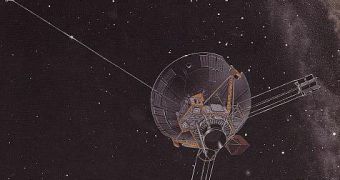It's been years since NASA last heard from either of its two Pioneer probes hurtling out of the solar system, but scientists are still debating the source of an odd force pushing against the outbound spacecraft.
A new study of the "Pioneer anomaly" suggests that there is an unknown but conventional force acting on the space probe and making it drift from the established flight path. Some physicists say the law of gravity itself needs revising.
When all known forces acting on the spacecraft are taken into consideration, a very small but unexplained force remains, that causes a constant sunward acceleration of both spacecraft. Now, Kjell Tangen, a physicist at the firm DNV in Hovik, Norway, says tweaking the law of gravity in a variety of ways cannot explain the anomaly.
Other scientists say even more radical changes in the laws of physics as we know it may explain the strange phenomenon, one of them claiming that gravity retains more strength in the outer solar system.
The problem is that altering the values of the gravitational forces acting on the craft, to see if this forces indeed changes in space as the probes get farther away, provides some unexpected results about the trajectories of Uranus and Pluto, so there must be something else out there.
Some scientists proposed a radical explanation of the strange trajectory, saying the Einstein's general theory of relativity suffered more extreme changes, since Tangen did not alter one of its central tenets, the equivalence principle, in his study.
This principle says that all objects respond to gravity in the same way regardless of their mass, composition or the paths they took to their present location. For instance, a bowling ball and a feather would fall in the same time in vacuum.
It would seem that violations of this principle could in fact explain the Pioneer anomaly while being in accordance with the known orbits of the two outer planets.

 14 DAY TRIAL //
14 DAY TRIAL //